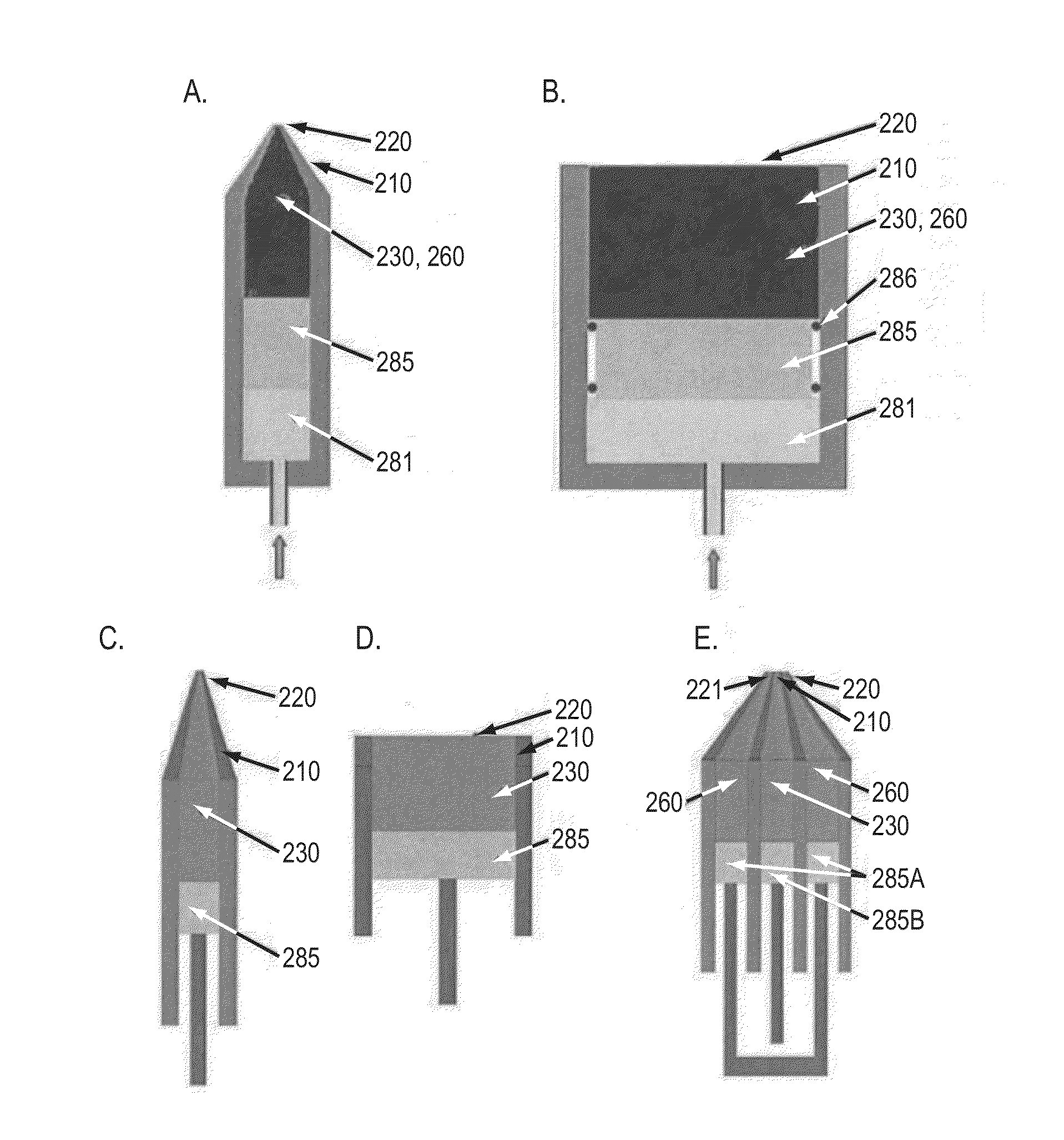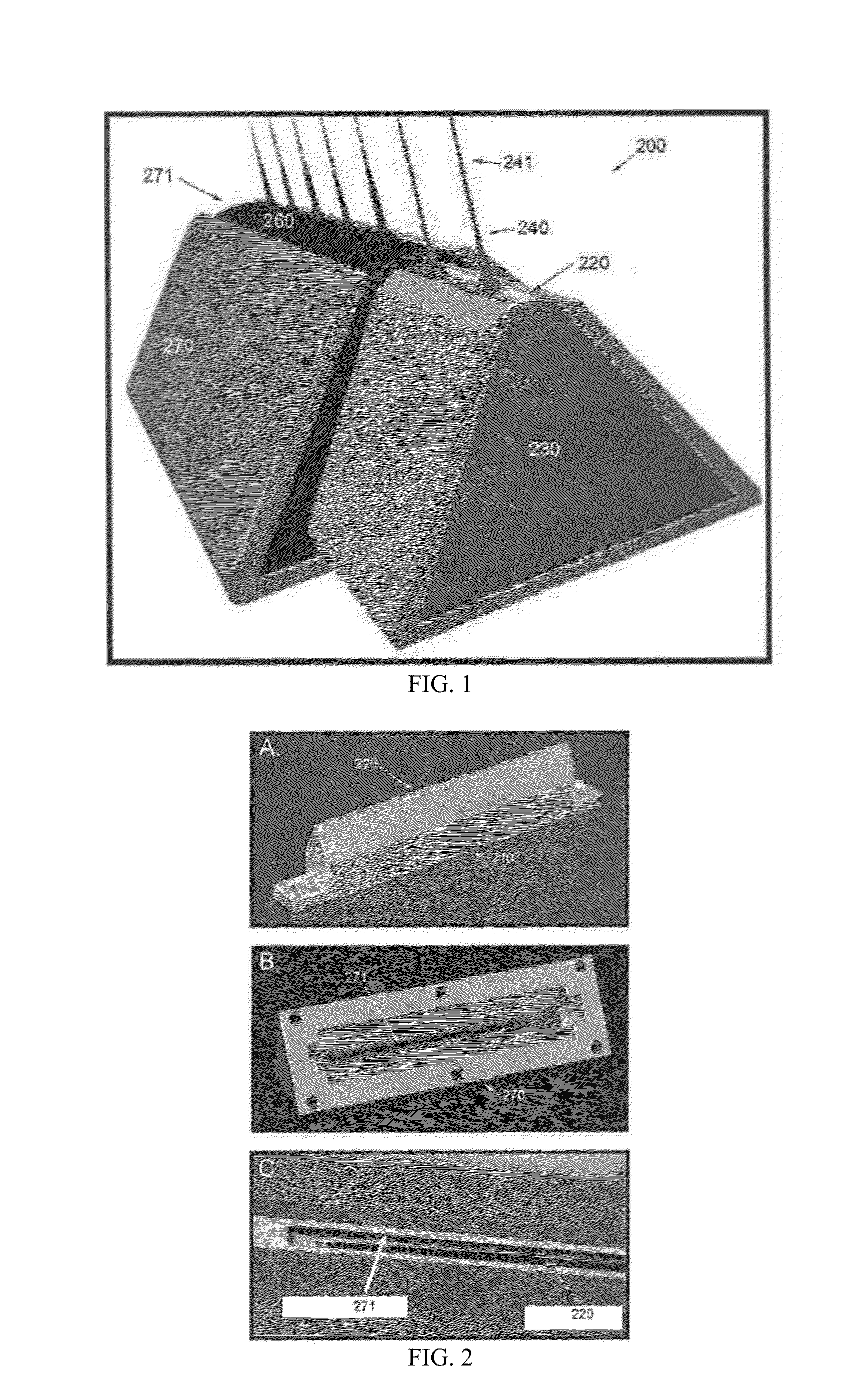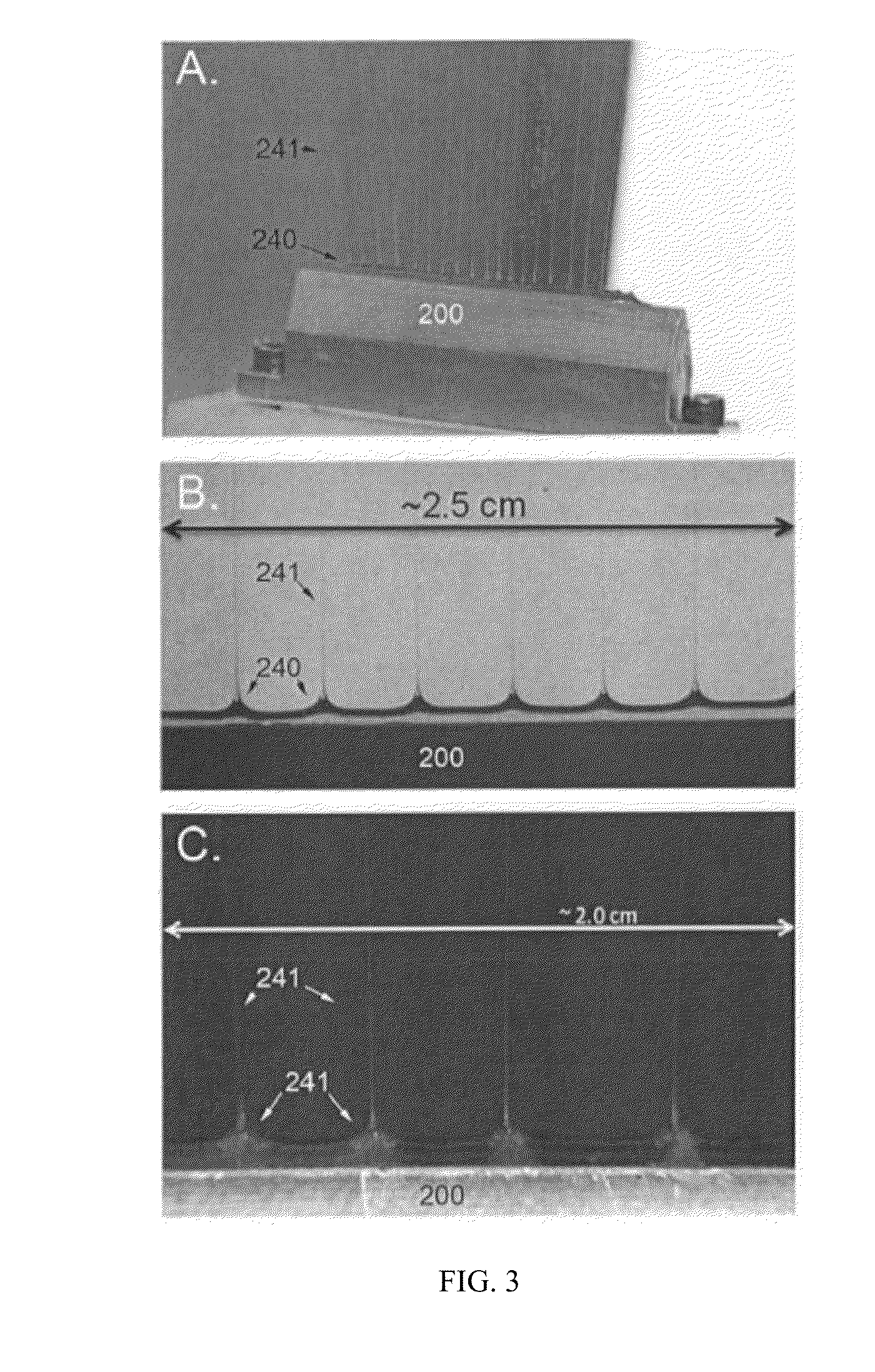Electrospinning Process for Manufacture of Multi-Layered Structures
a multi-layered structure and electrospinning technology, applied in the field of fiber structures, can solve the problems of limited throughput and inability to achieve drug-loaded core-sheath fibers. , to achieve the effect of improving the efficiency of emulsion-based electrospinning methods, the throughput of both emulsion-based electrospinning
- Summary
- Abstract
- Description
- Claims
- Application Information
AI Technical Summary
Benefits of technology
Problems solved by technology
Method used
Image
Examples
example 1
Electrospinning Conditions for Various Slit / Hole Geometries
[0057]Slit-surfaces of various geometries were fabricated and the formation of electrospinning jets from these surfaces was demonstrated. FIG. 10 shows slit-surfaces that are (A) continuously linear, (B) continuously circular, (C) continuously linear with holes, and (D) non-continuous holes. The respective dimensions of slits or holes and the electrospinning conditions used therefore are presented in Table 1, below:
TABLE 1GEOMETRIES AND ELECTROSPINNING CONDITIONSFOR APPARATUSES SHOWN IN FIG. 10:SlitApparatusPolymerSlitElectricGeometryGeometrysolutiondimensionsFlow rateFlow SourcefieldContinuouslyWedge6 wt % PLGA0.5 mm ×60 ml / hrUnderneath40 kVlinear75 / 25 in TFE35 mmContinuouslyAnnular or2 wt % PLGA1 mm ×120 ml / hr Underneath40 kVcircularShowerhead85 / 15 in80 mmChloroform / Methanol(6:1)ContinuouslyTube2.5 wt % PLGA8 cm long30 ml / hrEnds40 kVlinear with85 / 15 inholesChloroform / Methanol(6:1)Non-Tube2.5 wt % PLGA5 cm long20 ml / hrEnds4...
example 2
Achieving Even Flow of Polymer Solutions Using Mechanical Piston
[0058]Even flow of polymer solution to a slit was achieved by the use of a mechanical piston. FIG. 17A-B depicts the apparatus used. The wedge-shaped slit fixture is attached to a chamber connected to a piston that is mechanically driven using a syringe pump. As the piston moves forward, it pushes solution uniformly towards the slit. Using a flow rate of 50 ml / h and a voltage of 50 kV, multiple electrospinning jets emerged along the entire length of the slit as shown in 25C.
example 3
Achieving Even Flow of Polymer Solutions Using Pressure Diffusers
[0059]Even flow of polymer solution to the slit was achieved by incorporating pressure diffusers to divert momentum of fluid flow across the slit. Shown in FIG. 11 are examples of such diffusers. In FIG. 11A, the diffuser is a triangular fixture that contains holes across its length to allow polymer solution to flow through. To demonstrate its ability to divert fluid flow, the diffuser was press-fit inside a container such that flow of solution is forced through its holes rather than around. As shown in FIG. 11B, a dyed solution of PLGA in chloroform:methanol that was pumped into the container from one inlet source encounters the diffuser, spreads across the length of the chamber, and then flows through the holes of the diffuser. The result is a more even distribution of fluid flow across the length of the chamber. Similarly, FIG. 11C shows a circular shaped pressure diffuser that contains holes across its surface. As ...
PUM
| Property | Measurement | Unit |
|---|---|---|
| voltage | aaaaa | aaaaa |
| voltage | aaaaa | aaaaa |
| voltage | aaaaa | aaaaa |
Abstract
Description
Claims
Application Information
 Login to View More
Login to View More - R&D
- Intellectual Property
- Life Sciences
- Materials
- Tech Scout
- Unparalleled Data Quality
- Higher Quality Content
- 60% Fewer Hallucinations
Browse by: Latest US Patents, China's latest patents, Technical Efficacy Thesaurus, Application Domain, Technology Topic, Popular Technical Reports.
© 2025 PatSnap. All rights reserved.Legal|Privacy policy|Modern Slavery Act Transparency Statement|Sitemap|About US| Contact US: help@patsnap.com



